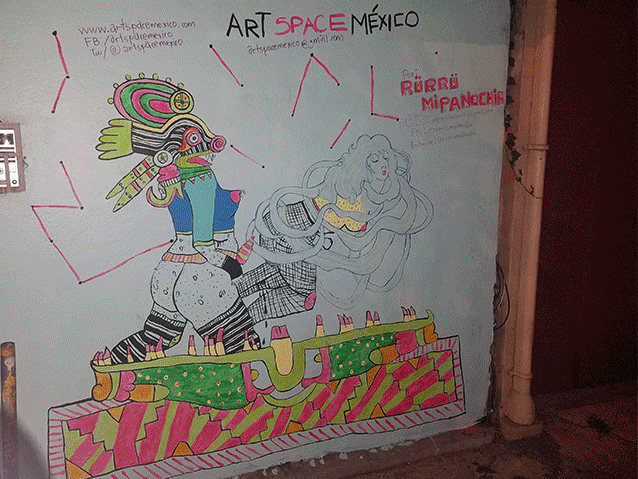
Mural by Rurru Mipanochia at ArtSpace Mexico.
Last month, I checked out what was on view at some of Mexico City’s galleries during the art fairs. Over the past week, I stopped by a few more. Highlights include Rurru Mipanochia at ArtSpace Mexico (bastion of queer contemporary art), SANGREE at Yautepec, and Mauricio Limón at Galería Hilario Galguera a few blocks away. Today is the last day to see Mauricio Limón’s show, and I highly recommend it.
All three very different solo shows share one thing in common: they mine Mexico’s turbulent post-colonial history with a sense of humor. Strategies range from queering pre-Columbian cosmology or hybridizing Mayan and classical European pottery to recycling imagery from currencies that failed in the face of globalization. Notably, none of this work comes across as bitter or preachy.
Rurru Mipanochia: Xochiquetzal: erotismo y procreación.
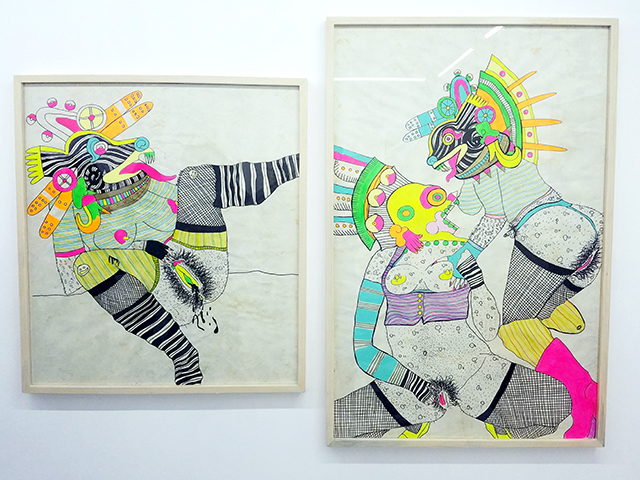
Rurru Mipanochia, from the “Xototl” series.
ArtSpace Mexico
Campeche 281, Condesa, 06100 Ciudad de México
Curated by Benjamín J. M. Martínez
On view until March 31
Rurru Mipanochia’s solo show at ArtSpace Mexico, which spans several years of pre-columbian-codex-inspired drawings, is undoubtedly one of the best and strangest things on view in the city. Think Aztec deities with breasts and dicks squirting menstrual blood (and other bodily fluids?) all over each other, sometimes wearing punk clothes and high heels.
The exhibition gets its name from Xochiquetzal, goddess of feminine sexuality, fertility, and women’s crafts. (Ironically, the colonial Catholics later associated her with an apparition of the Virgin Mary). Appropriately, her twin Xochipilli watched over male prostitutes, homosexuality, and artists. But there’s a whole pantheon of gods and goddesses referenced here, often with anatomy that blurs the lines between those distinctions, sometimes in bondage gear, shoving or expelling objects into/from whatever orifices Rurru has dreamed up.
The drawings, mostly marker and day-glo acrylic paint on paper, have a casual-but-fetishistic vibe that’s really endearing—like someone’s very private sketchbook. At the risk of losing that quality, these would translate so nicely to editioned screenprints. I totally would’ve bought one.
I somehow didn’t notice this until I was leaving, but the whole outer street-facing wall of the gallery is covered in Rurru’s murals. I can’t believe ArtSpace got away with this (it’s a small compound in the middle of a posh neighborhood). I can only imagine what the well-heeled neighbors think of a bunch of queer mythological creatures fucking out their windows.

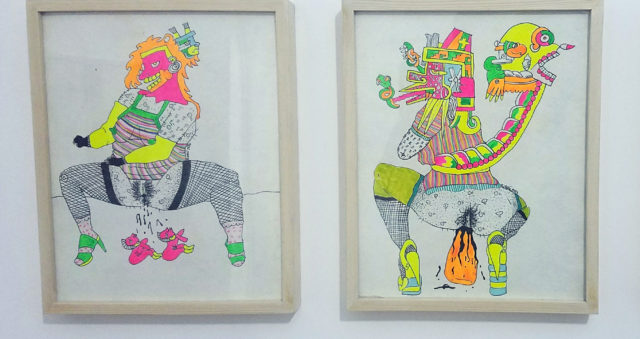
SANGREE: The Grand Design
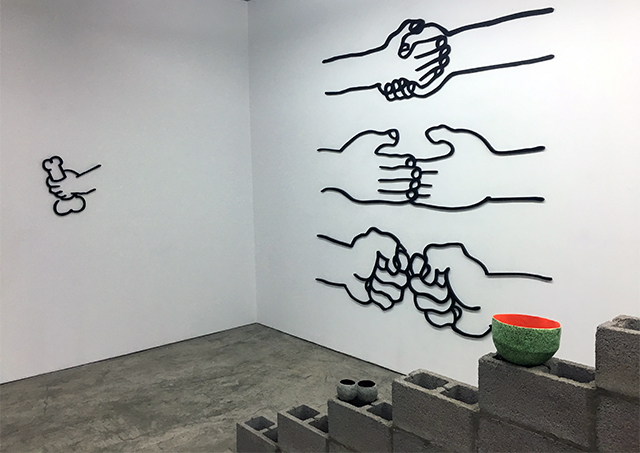
Yautepec
Melchor Ocampo 154-A, Col. San Rafael, Del. Cuauhtemoc, Mexico, D.F. 06470
On view until April 8th, 2017
SANGREE, the collaborative name of Carlos Lara and René Godínez Pozas, has an ambitious yet deceptively sparse installation up at Yautepec. The work comprises a series of wall-mounted pictograms of gestures from handshakes to handjobs and a maze-like cinderblock construction topped with faux-antiquities. What appear to be ceramics are in fact papier-mâché fakes—mashing-up Greco-Roman and Mayan designs in finishes ranging from dayglo airbrushing to appliqued crushed glass. In contrast to the somewhat-sterile aesthetic of the rest of the space, these have an awkward handmade charm.
I saw The Grand Design with Whitney Kimball, and she wasn’t quite as sold on these (she found the various deceptions and misdirections employed here to be overly “masculine”). The show’s driving concept (we were told) is a tribute to hands as the basis of civilization. This includes communication and bonding (gestures, handjobs) to architecture and functional crafts. Neither of us likely would’ve gotten that without the explanation from the gallery staff. I didn’t find that to be an issue—there’s a certain satisfaction that comes with feeling like a future archeologist trying to decipher the ruins of a cryptic civilization. And nearly every component of this show has a nice reveal when you get up close to the work. For example, the hand graphics look like black foamcore from a distance. On closer inspection, they’re meticulously carved black granite. Considering how minimal the install reads at first, each of these details comes across as a precious surprise.
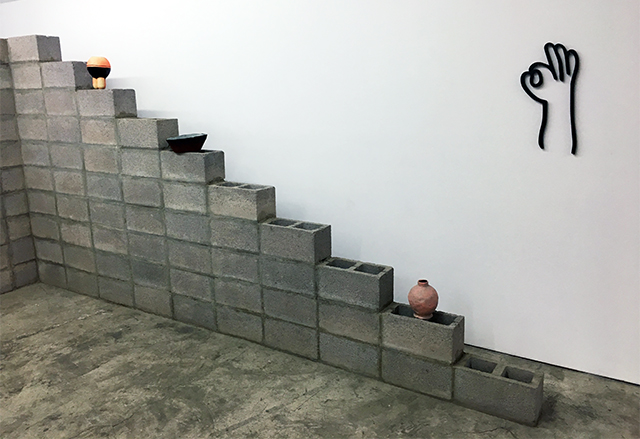

 Mauricio Limón: This note is legal tender for all debts public and private (Pagará a la vista al portador)
Mauricio Limón: This note is legal tender for all debts public and private (Pagará a la vista al portador)
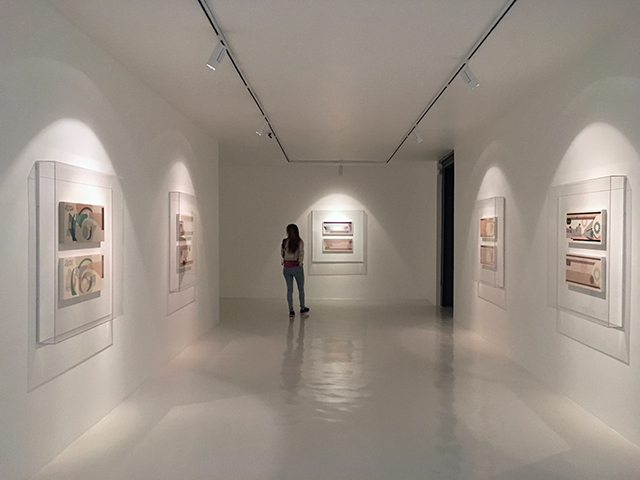
Galería Hilario Galguera, Installation View
Galería Hilario Galguera
Francisco Pimentel 3, Colonia San Rafael, México DF 06470
On view until March 17th, 2017
This show is also a slow burn, in a totally different way. The install recalls an anthropology museum, with pairs of panels hung in plexiglass vitrines under dim lighting. What’s missing here is didactic text—there’s clearly a deliberate concept behind the artifact-like abstract works here but it’s not immediately clear what that is. In each set, the top panel is a carefully glazed oil painting of mostly solid color blocks. Beneath it, the corresponding panel is a lithograph of intricate designs. Without knowing anything about the show (including the title) it took us a minute to realize what we were looking at. Some of the works are evocative of architectural renderings, old video game landscapes, or ceramic decorative motifs. Others could be a kimono fabric print or graphic design from Star Trek. Eventually, it occurred to us that they’re unfamiliar currency—devoid of any text, denomination, or portraiture.
Specifically, it turns out, these are based on various defunct notes from Mexico’s turbulent 1980s. They were utterly unknown to us, because the bills we’re used to now are technically “New Pesos”, a currency launched in 1993 in response to a decade plus of inflation and capital flight following the 1970s oil crisis. Stripped of monetary value, the left-behind imagery stands as a testament to a 20th century society’s ambitions and uncertain identity—from allusions to the petroleum industry and architectural patrimony to futuristic graphics. If you’re a fan of late modernist design (like me) you’ll appreciate these immensely. Perhaps tellingly, each of the panels (all untitled) is so different. There seem to have been an awful lot of denominations and no one unifying motif. Given the recent fluctuations of the current peso, this show feels not only nostalgic, but timely.
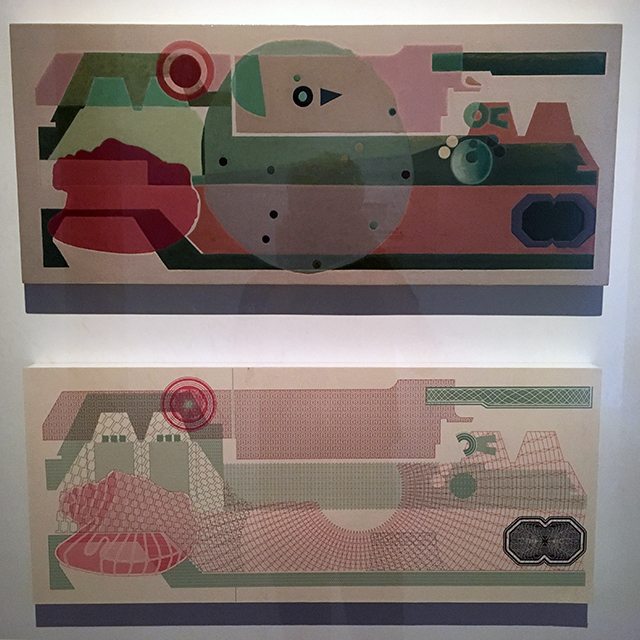
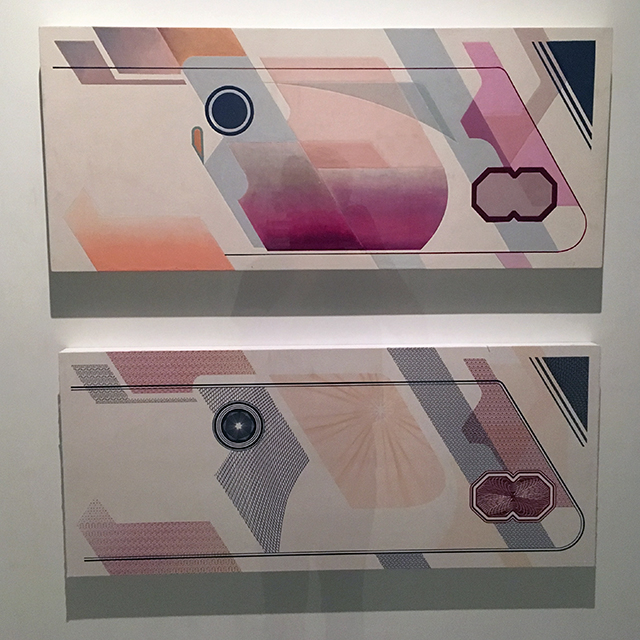
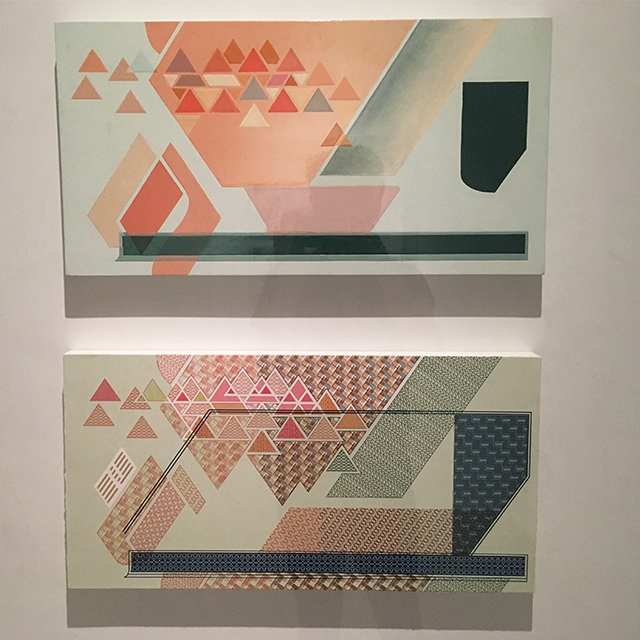



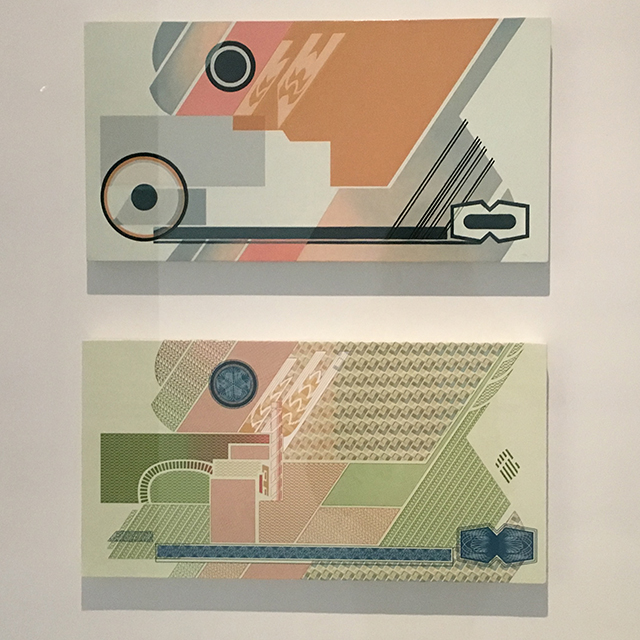
More recent Mexico City coverage:
- We Went to Gabriel Orozco’s OXXO
- SLIDESHOW: Mexico City Galleries, Part 1
- Museum Punk Show in Need of A Sound Guy
- Material Light on Substance, Heavy With Dick Pics
- Slideshow: Zona MACO, The Art Fair Where Commerce and Politics Make Strange Bedfellows
- We Went to Mexico: General Idea at Museo Jumex Restored Our Faith in Art For Fuck’s Sake
- We Went to Mexico: Barbara Kruger and Juan Pablo de la Vega Take the Subway
- The Timelessness of Sex, Violence, and Portraiture: Otto Dix at MUNAL


Comments on this entry are closed.